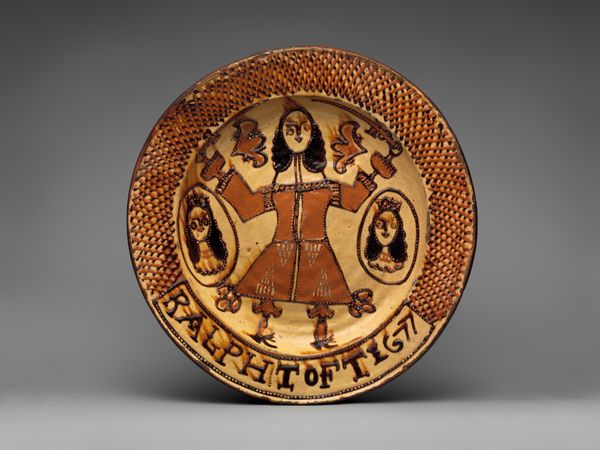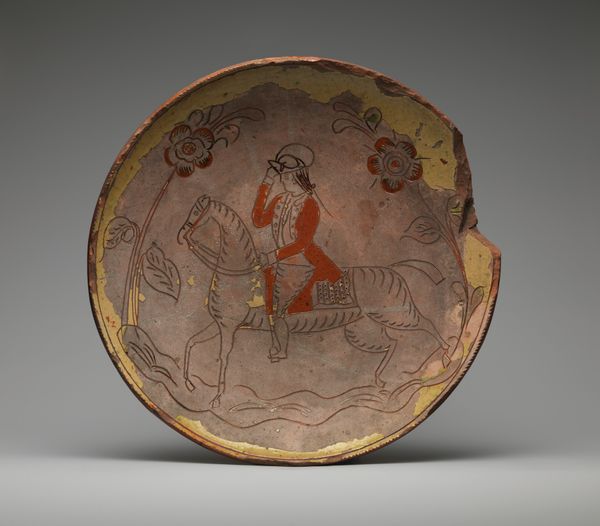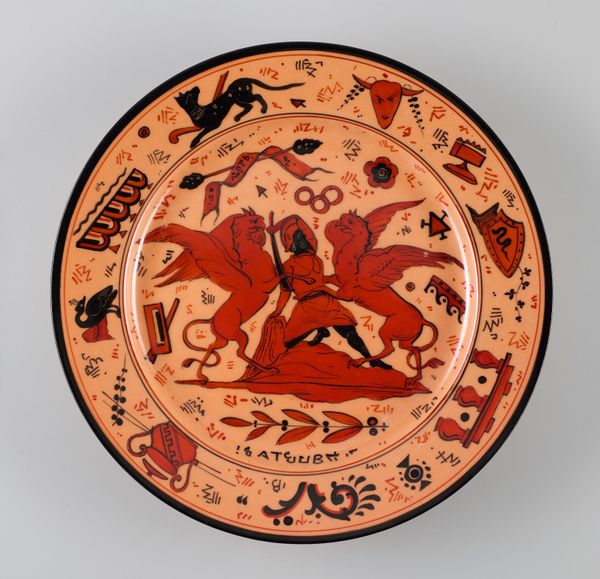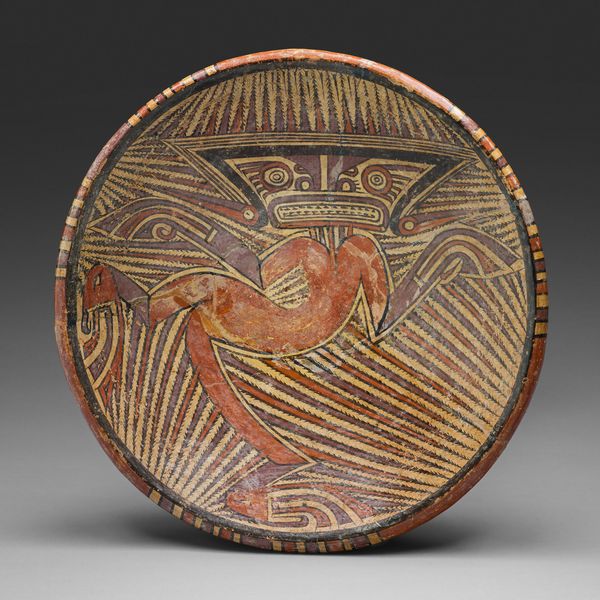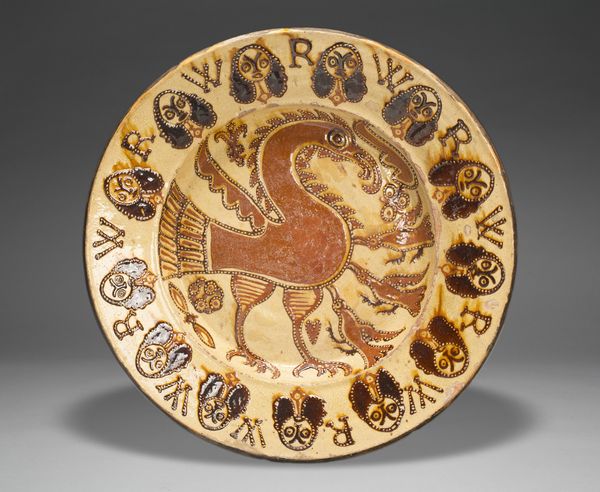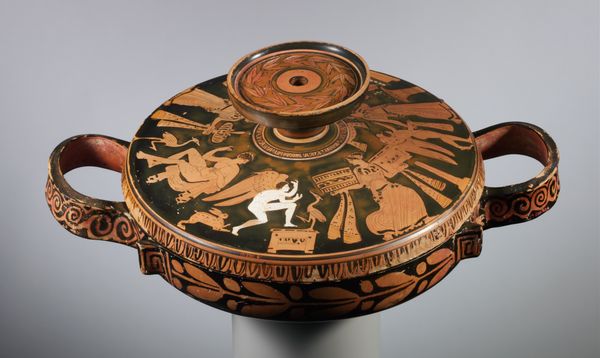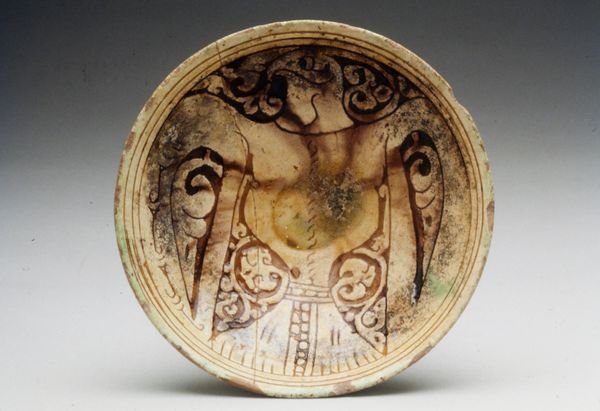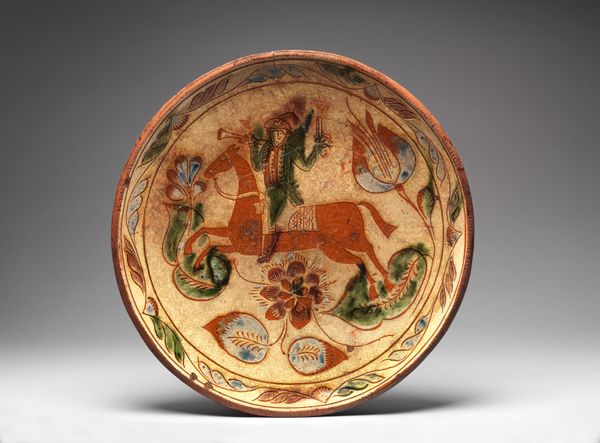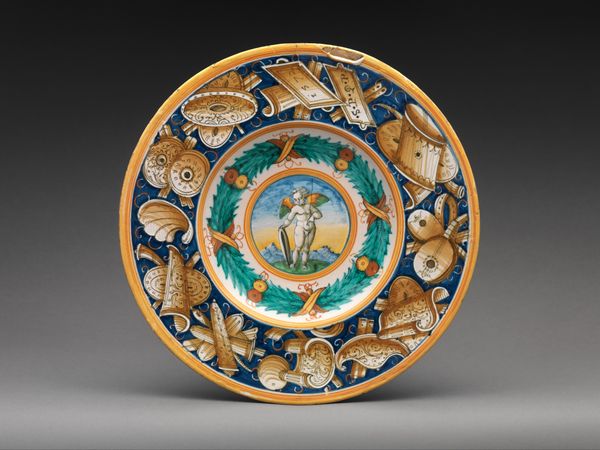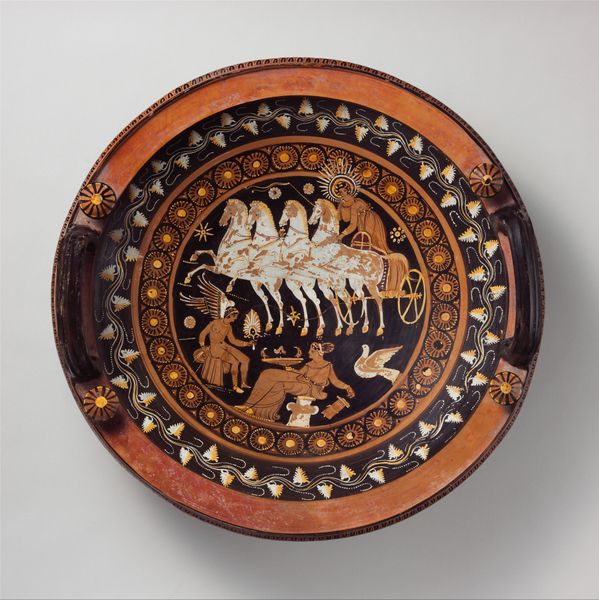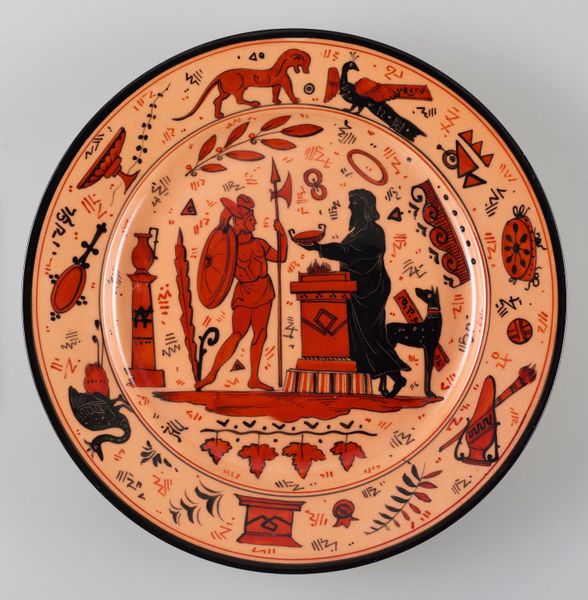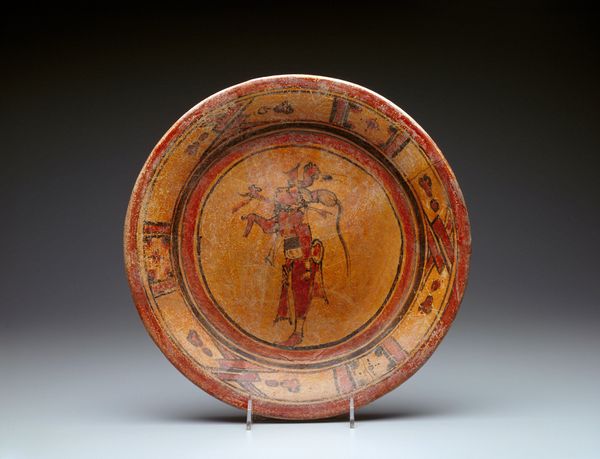
Display dish with Charles II (1630–1685) in a tree 1675 - 1685
0:00
0:00
ceramic, earthenware, sculpture
#
baroque
#
ceramic
#
figuration
#
earthenware
#
sculpture
#
ceramic
#
earthenware
#
decorative-art
Dimensions: Overall: 3 1/2 × 19 3/4 in. (8.9 × 50.2 cm)
Copyright: Public Domain
Curator: Let’s turn our attention to this fascinating display dish created by Thomas Toft between 1675 and 1685, titled “Display dish with Charles II (1630–1685) in a tree.” You can find this Baroque earthenware piece at the Metropolitan Museum of Art. Editor: Well, my immediate impression is one of whimsy tinged with the bizarre. The reddish-brown figures on that pale ground are quite striking, almost folkloric in their crudeness. Curator: Indeed. Let’s consider the material itself: earthenware. Toft’s manipulation of this readily available material speaks to the democratizing function of art production during this period. The process, from clay sourcing to firing, would have involved considerable manual labor, transforming a humble material into a symbolic object. Editor: Precisely. And look at the composition—Charles II rather awkwardly placed in the center tree, flanked by these fantastic beasts, a lion and what appears to be a chained dog, seemingly frozen in heraldic stances. What about these visual choices intrigues you? Curator: Semiotically, it presents a fascinating study. The placement of Charles II within the tree can be interpreted as symbolizing his connection to the English throne and the ideas of a dynastic right to rule; the animals can stand for protection or political opponents. The somewhat naïve rendering belies the sophistication of its political statement. Editor: I am struck by the earthy, unrefined quality of the medium, the fact that the very material bears witness to its own making. Consider the physical demands of its creation—the digging of the clay, the potter's wheel, the hot kiln—it all tells a story of production beyond royal imagery. Curator: An insightful perspective. The contrast between the depiction of the elite and the reality of its production highlights the complex social dynamics at play. The medium challenges the assumed inherent quality of portraiture itself. Editor: It certainly gives us a different entry point for thinking about Charles and this specific period of British History. A wonderful marriage between the royal figure and the work done by craftspeople from the time. Curator: Agreed. This work underscores how art, at any scale and in any material, provides complex reflections of social values. Editor: Indeed. It reveals just how materiality, in the hands of a capable artist, could inform a period and elevate the discourse about production and royal subject matters to further social and cultural context.
Comments
No comments
Be the first to comment and join the conversation on the ultimate creative platform.
